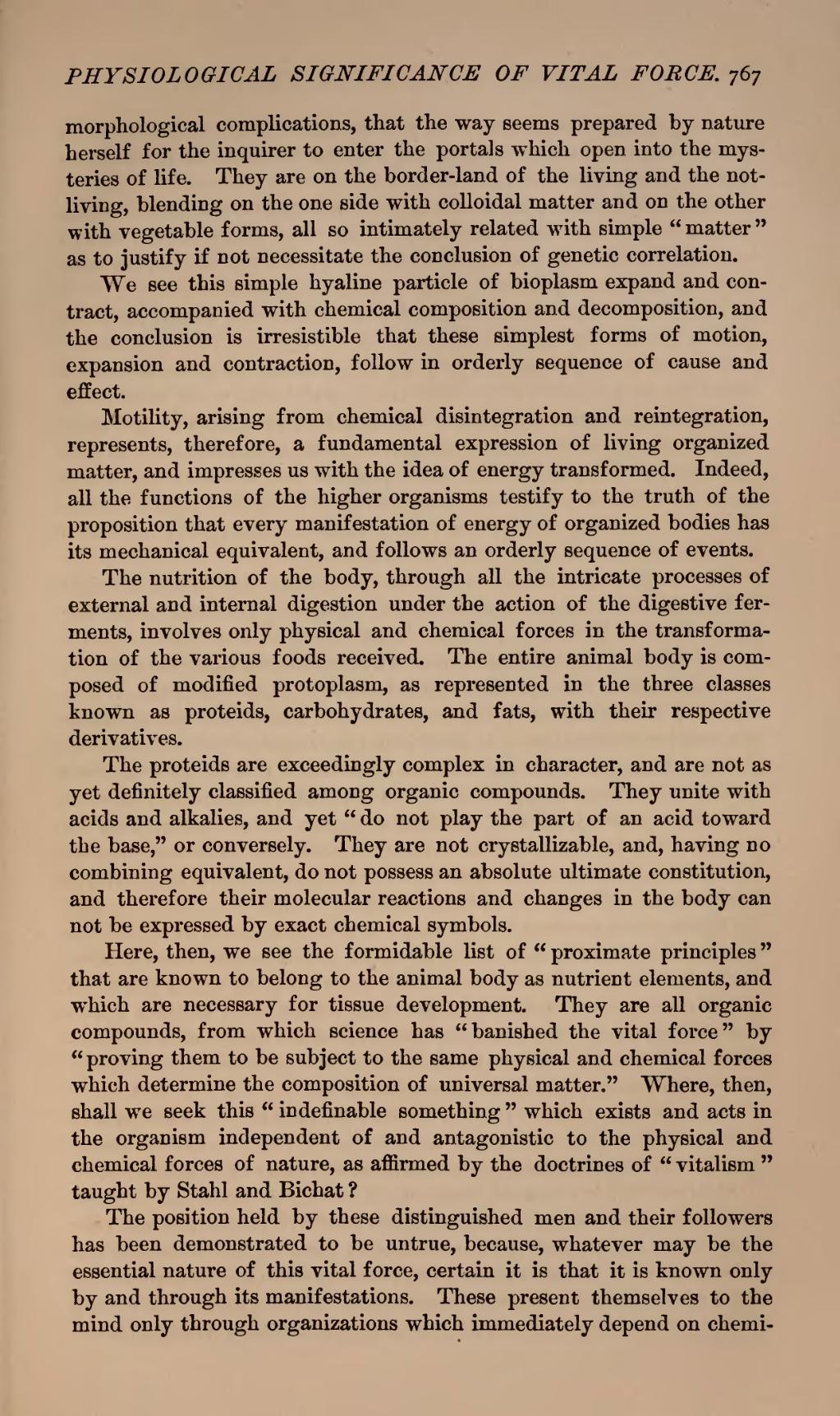morphological complications, that the way seems prepared by nature herself for the inquirer to enter the portals which open into the mysteries of life. They are on the border-land of the living and the not-living, blending on the one side with colloidal matter and on the other with vegetable forms, all so intimately related with simple "matter" as to justify if not necessitate the conclusion of genetic correlation.
We see this simple hyaline particle of bioplasm expand and contract, accompanied with chemical composition and decomposition, and the conclusion is irresistible that these simplest forms of motion, expansion and contraction, follow in orderly sequence of cause and effect.
Motility, arising from chemical disintegration and reintegration, represents, therefore, a fundamental expression of living organized matter, and impresses us with the idea of energy transformed. Indeed, all the functions of the higher organisms testify to the truth of the proposition that every manifestation of energy of organized bodies has its mechanical equivalent, and follows an orderly sequence of events.
The nutrition of the body, through all the intricate processes of external and internal digestion under the action of the digestive ferments, involves only physical and chemical forces in the transformation of the various foods received. The entire animal body is composed of modified protoplasm, as represented in the three classes known as proteids, carbohydrates, and fats, with their respective derivatives.
The proteids are exceedingly complex in character, and are not as yet definitely classified among organic compounds. They unite with acids and alkalies, and yet "do not play the part of an acid toward the base," or conversely. They are not crystallizable, and, having no combining equivalent, do not possess an absolute ultimate constitution, and therefore their molecular reactions and changes in the body can not be expressed by exact chemical symbols.
Here, then, we see the formidable list of "proximate principles" that are known to belong to the animal body as nutrient elements, and which are necessary for tissue development. They are all organic compounds, from which science has "banished the vital force" by "proving them to be subject to the same physical and chemical forces which determine the composition of universal matter." "Where, then, shall we seek this "indefinable something" which exists and acts in the organism independent of and antagonistic to the physical and chemical forces of nature, as affirmed by the doctrines of "vitalism" taught by Stahl and Bichat?
The position held by these distinguished men and their followers has been demonstrated to be untrue, because, whatever may be the essential nature of this vital force, certain it is that it is known only by and through its manifestations. These present themselves to the mind only through organizations which immediately depend on chemi-
